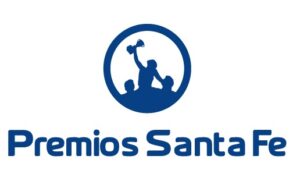Understanding the Credit Card Billing Cycle: What You Need to Know
The information, including card rates and fees, presented in the review is accurate as of the date of the review. Check the data at the top of this page and the bank’s website for the most current information. For example, if your statement is generated on 31st December, your billing cycle of Decemberwill be from 1st December to 31st December. Effectively utilising the interest-free credit term necessitates knowing your monthly cycle.
- If you do not pay the full amount, you will be charged interest on the outstanding balance.
- Perfect for businesses aiming to optimize finances and improve reporting.
- If you believe that there is an error on your credit card statement, you should contact your bank immediately to dispute the charge.
- For example, your credit card payment date might be on the 23rd of the month, but your billing period might fluctuate slightly.
- Your eligibility for a particular product and service is subject to a final determination by Citibank.
The consequences of not paying credit card bills on time
The importance of understanding credit card billing cycles lies in their impact on payment due dates, interest calculations, and overall financial planning. Knowing when your billing cycle starts and ends allows you to plan payments to avoid interest charges and late fees. This comprehension helps maintain a healthy credit profile and optimize the benefits offered by credit card rewards or incentives. Knowing when your credit card’s billing cycle starts and ends is important for paying your credit card bills on time, something that can impact your credit score. Information that credit card issuers report will typically go into your credit reports and impact your credit scores.
How to automate accounting data entry
If you’re planning to use your credit card for a large purchase, you will need to have enough credit available to do so. You have until the due date to pay the minimum balance, the statement balance or anything in between. Keep in Credit Card Billing Cycles mind that not paying the statement balance could result in interest charges. If you don’t pay the minimum balance by the due date, your payment is late. And since late payments can drastically decrease your credit score, it’s also important to have a consistent history of on-time payments to maintain good credit. Being able to understand your billing cycle allows you to make better decisions, manage your payments effectively, and avoid unnecessary interest fees.
What are Billing Cycle Disputes?
Most creditors will work with you to find a solution that satisfies everyone. Here’s everything you need to know about billing cycles and how to use them to your advantage. So let’s take it from the top and go over some billing cycle basics before diving deeper into strategies you can use to run your business more smoothly. No, you won’t be able to use another credit card to pay off or make a payment on your Capital One credit card.
Plan large purchases ahead of time
Credit card companies are required by law to make their billing cycles equal, but there is some leeway–around three to four days–for longer or shorter months. For example, your credit card payment date might be on the 23rd of the month, but your billing period might fluctuate slightly. This would allow for months with an extra day, like January, or those with fewer days, like February. Every month, you will receive a credit card statement showing the total amount you owe and the minimum payment due.
- Decide how much you can afford to spend on your credit card each month, and stick to it.
- Credit card companies are required by law to make their billing cycles equal, but there is some leeway–around three to four days–for longer or shorter months.
- The closing date and the due date for your credit card are both important dates to understand.
- In this article we’ll look at how credit card billing cycles work, how long a billing cycle is, and tips for using your billing cycle to plan.
Credit cards often have different APRs for various transaction types, such as purchases, cash advances, or balance transfers. Furthermore, consider reaching out to Citi’s customer service or consulting with a financial advisor if you require personalized guidance in evaluating the impact of changing your billing cycle. By seeking expert insight, you can gain clarity on how the modification may influence your financial dynamics and make well-informed decisions tailored to your unique circumstances. A better credit score means you’ll have access to better rates and more purchasing power.
Recognizing their structure helps in navigating credit card statements efficiently and maintaining financial health. Your credit card payment due date is generally about 21 to 25 days after your billing cycle ends. You may not receive a grace period if you didn’t pay your balance in full after your last billing cycle or if you’ve transferred a balance or taken out a cash advance. You can monitor your FICO® ScoreΘ for free for free from Experian to see how your score changes from one month to the next.
The billing period refers to the specific span of days during which all credit card transactions are recorded and consolidated to generate a statement. Its determination depends largely on the credit card issuer’s policies and can vary between providers. A comprehensive grasp of billing cycles enables consumers to avoid unnecessary fees and make informed decisions.
Learn their types, accounting treatment, and impact on financial statements. This guide helps you streamline budgeting, track costs, and plan effectively for financial stability in personal and business finances. Invoice financing allows businesses to access cash by borrowing against unpaid invoices, improving cash flow without added debt. It’s a fast, flexible solution for managing working capital and driving growth. BIC/SWIFT codes are unique identifiers used in global banking to facilitate secure, error-free international transactions. This guide explains their structure, purpose, and importance in cross-border payments, ensuring smooth financial operations worldwide.
All content at Self is written by experienced contributors in the finance industry and reviewed by an accredited person(s). For this reason, it’s important to know when the end of your billing cycle occurs, when the next billing cycle begins, and your due date. Search the CreditCards.com glossary for every credit-related term from “account holder” to “zombie debt.” Select a letter for alphabetized terms and definitions. If you are not satisfied with the bank’s decision on your dispute, you can appeal to the RBI. The RBI has a dedicated team that handles credit card disputes, and they will investigate your case and make a decision. OCR technology revolutionizes invoice scanning by automating data extraction with AI-driven accuracy, reducing errors, saving time, and ensuring scalable, efficient financial workflows.
Interest-Free Period of a Credit Card
If you cannot make the full payment, you should make a minimum payment of at least the minimum due amount. The minimum due amount is usually a small percentage of your outstanding balance, and it is not enough to cover the interest charges. The due date and minimum payment for a credit card are usually specified on your credit card statement. You can also find this information by contacting your credit card issuer. The first and foremost thing to know before becoming a regular credit card user is knowing your card’s billing cycle.
Overall, purchases, payments, and adjustments within a billing cycle are interconnected factors that influence the billing statement’s accuracy. Recognizing how these elements affect your credit card account is vital for effective financial management and avoiding unnecessary fees. In summary, the role of opening and closing dates is vital in understanding credit card billing cycles, facilitating better financial planning and responsible credit management. A credit card statement provides a detailed record of your account activity during a specific billing cycle. To better understand it, start by examining the statement date and billing period, which outline the timeframe for your charges and payments.



















